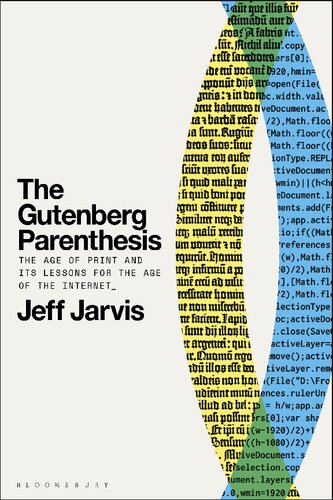(Ebook) The Gutenberg Parenthesis: The Age of Print and Its Lessons for the Age of the Internet by Jeff Jarvis ISBN 9781501394829, 9781501394867, 1501394827, 150139486X
To help us understand our transition out of the Gutenberg Age, Jeff Jarvis presents a history of print and its technologies – of its spread, of print inventions such as the modern novel, the essay, the newspaper, and of attempts to control speech through censorship and copyright.The five-century-long age of print was a grand exception in history. It gave rise to a worldview which some call print culture – shaped according to the completeness, permanence, materiality, authorship, and authority of text. As print and its influence on every aspect of life is now eclipsed by new technologies – the internet and data – the contrast between these eras gives us the opportunity to better understand print’s presumptions.This captivating, profound, challenging, and ultimately optimistic saga contends that we are returning to a time before mass media, to a society built on conversation, and that we are relearning how to hold that conversation with ourselves. Drawing upon the work of scores of scholars in book history, technology, sociology, religion, literature, law, media, and design, The Gutenberg Parenthesis examines print’s age on a grand scale and challenges readers to learn its lessons as we design the internet and society of our future.The theory of the Gutenberg Parenthesis holds that the age of print was an exception in the course of history. There are lessons to be learned from the transition into the age of print as we leave it for what follows: the connected age of the internet and data. The book’s first section examines that theory and print’s presumptions, rejecting periodization in favor of finding continuities from medieval to present, also rejecting technological determinism—there are choices to be made. The second section recounts the development and methodology of movable type as a technology, its impact on culture, and its spread across Europe and the world. As occurs when a new technology empowers voices not previously heard, incumbent institutions exert control: censorship, licensing, banning, as well as copyright. The first significant innovation with print came 150 years after Gutenberg with the creation of the modern novel, the essay, and the newspaper. A half-millennium after Gutenberg, his hot-type technology finally fell—to cold type, Postscript, the net—and Elizabeth Eisenstein set off the new field of book history, inspired and irritated by Marshall McLuhan. The book’s last section explores choices facing society now: recapturing the public conversation after its commodification as content in media; rejecting the mass in favor of community and identity; finding new means to support creativity; and rebuilding institutions needed to do that. As for the fate of the book, Jarvis recants earlier calls for updating the form and concludes, “Let the book be the book.”
*Free conversion of into popular formats such as PDF, DOCX, DOC, AZW, EPUB, and MOBI after payment.


